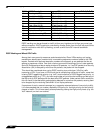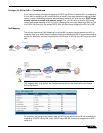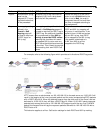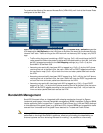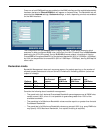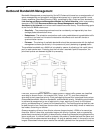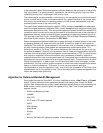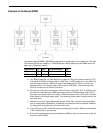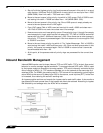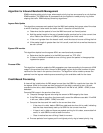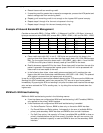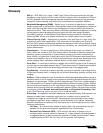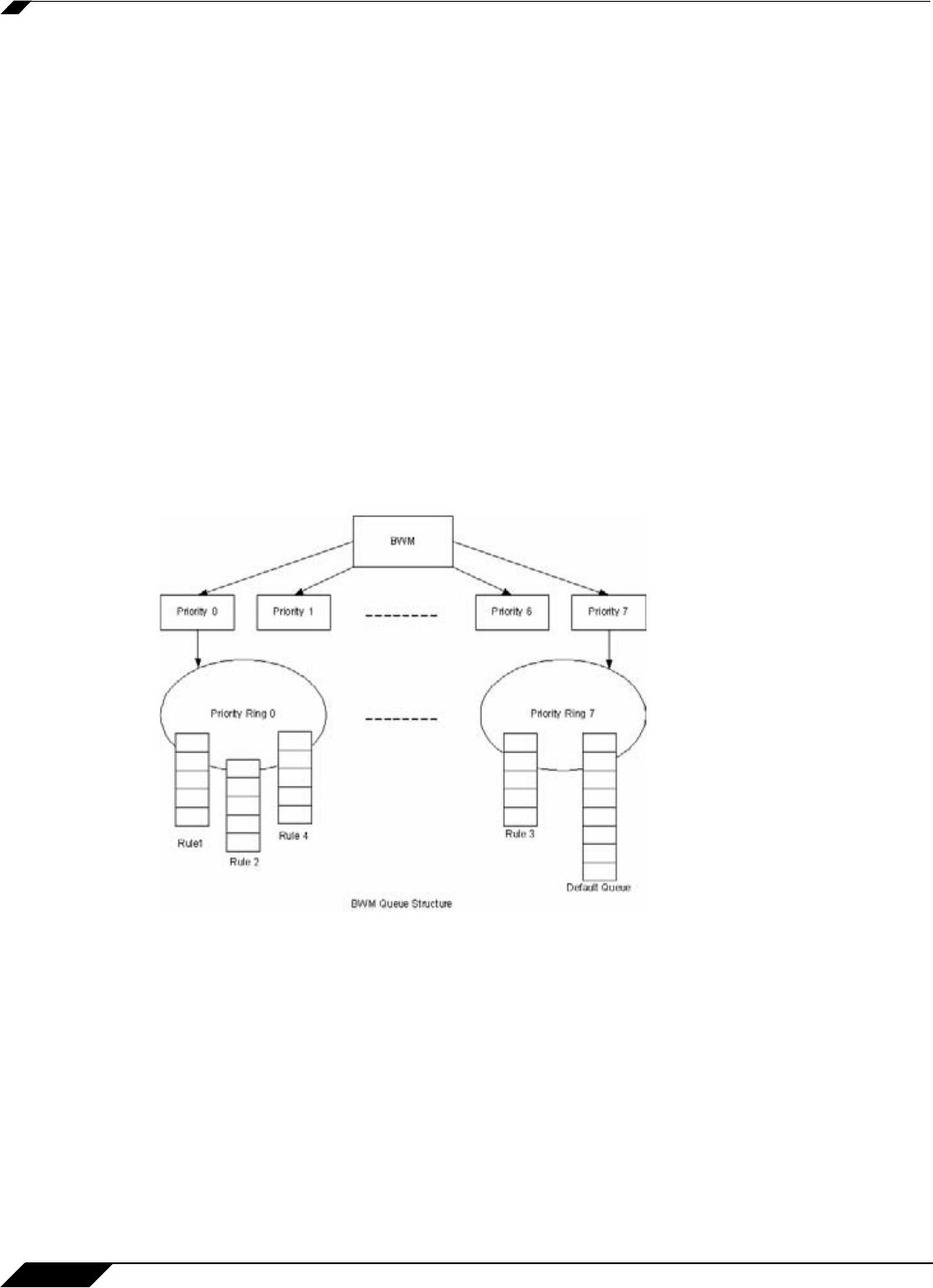
Firewall > QoS Mapping
482
SonicOS Enhanced 4.0 Administrator Guide
Outbound Bandwidth Management
Bandwidth Management as employed by SonicOS Enhanced is based on an amalgamation of
queue management and congestion avoidance techniques, but in empirical practice it most
closely resembles Class Base Queuing (CBQ), as defined by Sally Floyd and Van Jacobson in
Link-sharing and Resource Management Models for Packet Networks, while incorporating
elements of RFC2309 Recommendations on Queue Management and Congestion
Avoidance in the Internet and various credit-based flow control theory. The overarching goals
of the SonicOS BWM scheme are:
• Simplicity – The processing overhead must be consistently and appreciably less than
average packet transmission times.
• Robustness – The scheduler must perform well under predictable and unpredictable traffic
conditions, and must not introduce undesirable side effects such as traffic bursts or
synchronization issues.
• Fairness – The sharing of available bandwidth should be commensurate with the defined
management scheme, particularly in the presence of poorly behaving or greedy traffic.
The available bandwidth on a WAN link is tracked by means of adjusting a link credit (token)
pool for each packet sent. Providing that the link hasn’t reached a point of saturation, the
prioritized queues are deemed eligible for processing.
Like CBQ, SonicOS BWM is based on a class structure, where traffic queues are classified
according to Access Rules—for example SSH, Telnet, or HTTP—and then scheduled
according to their prescribed priority. Each participating Access Rule is assigned three values:
Guaranteed bandwidth, Maximum bandwidth, and Bandwidth priority. Scheduling prioritization
is achieved by assignment to one of eight priority rings, starting at 0 (zero) for the highest
priority, and descending to 7 (seven) for the lowest priority. The resulting queuing hierarchy can
be best thought of as a node tree structure that is always one level deep, where all nodes are
leaf nodes, containing no children.
Queue processing utilizes a time division scheme of approximately 1/256th of a second per
time-slice. Within a time-slice, evaluation begins with priority 0 queues, and on a packet-by-
packet basis transmission eligibility is determined by measuring the packet’s length against the
queue credit pool. If sufficient credit is available, the packet is transmitted and the queue and
link credit pools are decremented accordingly. As long as packets remain in the queue, and as
long as Guaranteed link and queue credits are available, packets from that queue will continue



